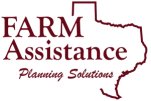The Big Picture
The broad objective of the FARM Assistance program is to improve decision-making in and for the agricultural industry of Texas. To that end, FARM Assistance focuses on both the individual producer and the entire agricultural economy.
Partnerships & the Land Grant Mission
The Texas A&M University System serves the people pf Texas through teaching, research, and extension. The advantage of the land grant system is that each of these three efforts support and compliment the other two, making each stronger and more valuable than if the effort stood alone. FARM Assistance is a prized component of The Texas AgriLife Extension Service – Agricultural Economics program unit. While FARM Assistance is fully an Extension program, it is an excellent example of the partnership spirit that is the purpose of the land grant institution.
Partnering with the Texas Agricultural Experiment Station
The FARM Assistance program was built on a foundation of 20 plus years of research. Agricultural economists with the Texas A&M University System have developed and perfected methods in risk analysis and in simulating the financial future of the agricultural production firm. The capabilities are now being extended to provide farmers and ranchers in Texas with sound decision-making information. FARM Assistance in turn supports Texas A&M University System research activities by gathering valuable insight to the “real world” issues that producers face on a daily basis. These insights help identify and direct research topics, and the individual producer data collected through the FARM Assistance process is available to help answer critical research questions.
Partnering with Texas A&M Teaching
Participants in the FARM Assistance program benefit from interacting with specialists and professors connected to the teaching programs at Texas A&M University. Management, finance, accounting, and economic concepts taught in the classroom are highly relevant and beneficial to the farm or ranch manager. Classroom instruction at Texas A&M University is also improved through the insights and real world issues experienced through working with individual producers. Because of the University system’s interaction with the agricultural industry, students are better prepared for jobs in the industry.
 FARM Assistance
FARM Assistance